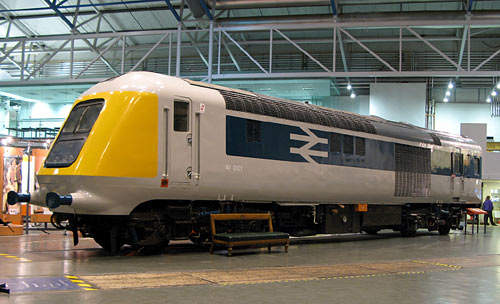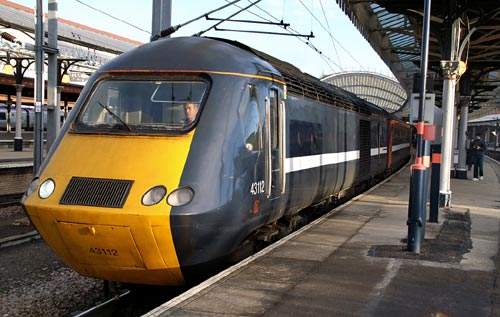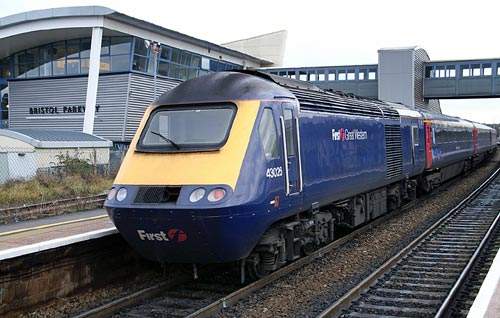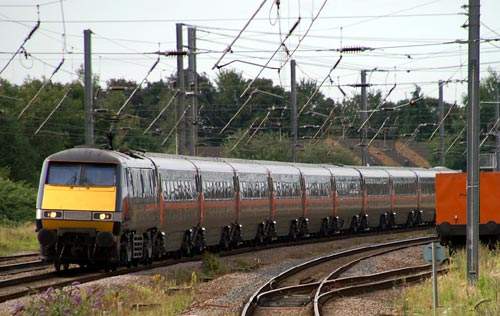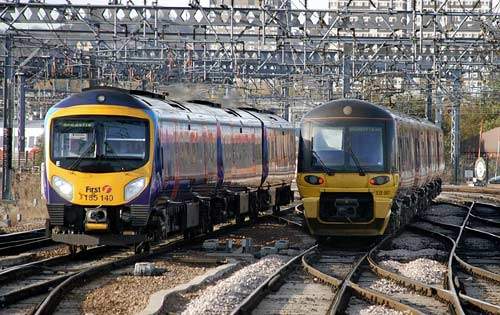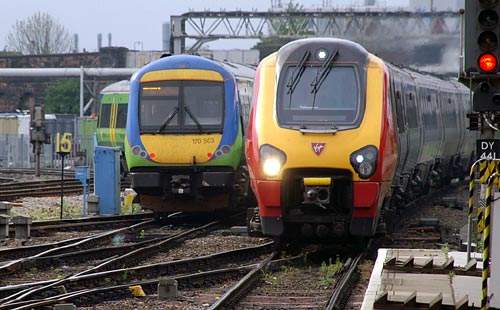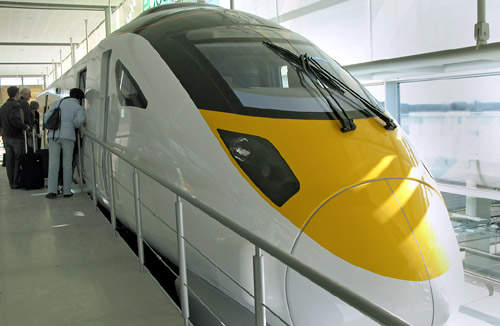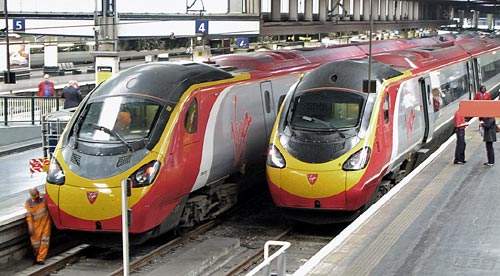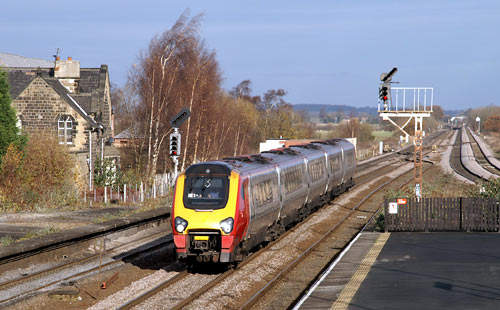The Department for Transport began the procurement process in March 2007 for what it termed ‘the UK’s most significant investment in rolling stock for over 30 years’. On 16 November 2007, three preferred bidders were asked by Government to start designing a fleet of trains that will represent the largest single change in national long distance rail passenger transport in the UK. They were:
- Alstom-Barclays Rail Group
- Express Rail Alliance (Bombardier, Siemens, Angel Trains and Babcock & Brown)
- Hitachi Europe Ltd
Whatever trains emerge under IEP, they will remove the High Speed Train (HST) from the British railway network after around 40 years of fleet operation, also the first-generation electric train formations of the East Coast Main Line (ECML). Siemens Transportation Systems’ managing director said of IEP, “A rail contract of this magnitude within such tight timescales has never been placed with a single party before.”
THE PROJECT
The IEP project is being handled as a public-private partnership of up to 35 years including manufacture, maintenance and finance. IEP objectives include increased network carrying capacity, an enhanced passenger environment, improved safety, being environmentally sustainable and minimised whole-life, whole-system cost.
The project brief is characterised by the expectation for the trains to have the flexibility to go virtually anywhere on the high-volume, long-distance routes of a network in transition, also with no presumption of comprehensive electrification. The design has to allow for accommodating modifications for whatever traffic conditions and customer expectation may occur over the next thirty years.
The project’s scale and complexity is indicated by the presence of the world’s biggest train builder, Bombardier, working with competitor Siemens within the specially formed Express Rail Alliance. Although they are competitors, Siemens and Bombardier have collaborated previously, for example with the German ICE, Chinese metros and trams for De Lijn, Belgium.
With indications that, if successful, their group could involve Bombardier’s Derby facility, this is the only one of the bidders that appears to offer manufacturing inside the UK (although this aspect is not included as a bid requirement).
Siemens has enjoyed much UK success with fleets for, among others, Trans Pennine, Heathrow Express, National Express ‘one’ and South West Trains.
Having a significant presence in the UK market with WCML Pendolinos and associated train care, Eurostars, London Underground, plus EMU classes in the south-east. there was little surprise in French giant Alstom’s inclusion in the list of preferred bidders. However, in February 2008 they nformed the UK Department for Transport that they were withdrawing from the process. In spite of this, Alstom indicated their intent to examine future potential contracts in association with Barclays Private Equity.
A key player in the Japanese bullet train, Hitachi’s presence as a preferred bidder follows on from their contract to supply the Javelin fleet that will operate over conventional routes and the High Speed 1 line to London.
INFRASTRUCTURE
Although inherent in IEP that the new trains will ‘go anywhere’, there are nevertheless implications for planning by national infrastructure operator, Network Rail. These include platform length, signalling, power upgrades, gauging and access to the as-yet undecided maintenance facilities.
The IEP designates two ‘Core Routes’ – ECML and Great Western Main Line (GWML) – plus ‘Other Routes’ split into two categories, either expected to be used by IE or may be used by IE trains. These variously add such lines as London-Cambridge-Kings Lynn, London to Manchester via Northampton and Stoke loops, and SW England to Scotland via Leeds and Newcastle.
ROLLING STOCK
IEP requirements were published in spring 2007 by the Department for Transport in Specification IEP-TECH-REQ-35 Edition 1. The most striking requirement, apart from its scale, is that the fleet should offer three forms of motive power. These are 25kV ac overhead electric, self-powered and bi-mode. The size of the order is not made clear, although 800 is thought to be the likely minimum, with the potential to reach 2,000.
Given no further commitments to mainline electrification schemes, the straight electric variant relates to services from Glasgow/Edinburgh and Bradford/Leeds to London Kings Cross, largely handled at present by Class 91/Mark 4 coach sets. However, the other two types are specified to be capable of conversion to this solo power supply.
Self-powered effectively means diesel, although the Hitachi/Brush battery-diesel hybrid ‘Hayabusa’ test vehicle may eventually have relevance in the project.
The self-powered variant will mean replacement of the Class 43/Mark 3 HST, the basis of high-speed GWML services out of London Paddington.
The bi-mode (hybrid) version is to take account of the UK’s patchy 25kV ac electrification. For example, it would allow Scottish services to proceed beyond Edinburgh to Aberdeen, cross-country routings to use electricity as far south as York before switching to diesel for onward travel to the south-west, also to facilitate emergency re-routings. Although the ‘go-anywhere’ feature would overcome such infrastructure limitations, it would nevertheless mean that such trains would be hauling the weight of some unused components when working in either mode.
SIGNALLING/COMMUNICATIONS
IEP trains are required to be fitted with AWS and TPWS train protection systems and are compatible with the UK application of ETCS Level 2 under development by Network Rail. IEP should be able to work routes fitted with the BR-ATP system. The bidders are to take account of compatibility with current communication systems and later installation of GSM-R.
As in several areas, the IEP bid specification is not prescriptive about passenger information and communications, but calls upon the bidders to detail these aspects. In another example of covering changed arrangements, they are to state how seat reservation systems will handle future layout changes. Mindful of the UK’s railways being run by franchisees, they are also to identify ‘a solution to meet the range of external livery and marketing requirements.’
THE FUTURE
The bidders are due to submit proposals by May 2008, with the contract awarded during April 2009. Whatever emerges from the IEP trains will become a large part of the UK rail scene for many years beyond their introduction. The timetable for IEP calls for introduction of the pre-series for testing and evaluation on the ECML from 2012, with fleet operation from 2014. The first route designated to gain the new trains is the ECML, followed by the GWML.
Since the bid invitations were announced in November 2007, pressure has increased from within the UK rail industry, including from Network Rail, for more widespread main line electrification. If this were to become likely in the short to medium term, the issue of bi-mode propulsion and the composition of the eventual fleet orders may yet be revised.
Even allowing for their size and the potential of great financial reward, for the remaining two bidding groups, the IEP project remains a complex challenge and an immense commitment of their resources.

